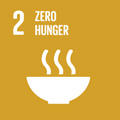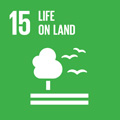- Docente: Angela Costa
- Credits: 2
- SSD: AGR/17
- Language: Italian
- Teaching Mode: Traditional lectures
- Campus: Bologna
- Corso: Single cycle degree programme (LMCU) in Veterinary Medicine (cod. 5984)
-
from Feb 24, 2025 to May 26, 2025
Learning outcomes
At the end of the course, students are expected to know those principles of genetics important for animal breeding in companion animals and livestock species, with general knowledge of strategies, tools and limitations of genetic improvement
Course contents
Phenotype and genotype. Autosomes and sexual chromosomes, genes, and alleles.
Inheritance. Mendelian laws, crossbreeding, and sex-linked inheritance.
Extensions of Mendelian principles. Multiple alleles, incomplete dominance, co-dominance, interactions between genes, epistasis.
Essential and lethal genes. General overview.
Gene expression. Variable penetrance and expressivity.
Gene location. Mapping, genetic distance, linkage.
Population genetics. Inbreeding, allele and gene frequency, Hardy-Weinberg equilibrium. Practical session: inbreeding coefficient calculation and Chi-square test to assess Hardy-Weinberg equilibrium.
Conservation plans for breeds or species. General overview.
Qualitative and quantitative traits in livestock and companion animals. Definition of environmental, genetic, and phenotypic variability and calculation of heritability.
Genetic improvement in production species. Official testing in dairy and meat species. Overview of tests available. Gene editing.
Selection towards desired morphology in pets. Consequences related to extreme morphology and future perspectives.
The Syllabus of the course unit and the list of EAEVE Day One Competences that the course unit contributes to achieving can be viewed on the dedicated page.
Readings/Bibliography
Teaching material and slides will be progressively uploaded on the Virtuale platform during the course. For further information, please contact the instructors. An English version of the following books can be retrieved from the instructor upon request:
- G. Pagnacco "Genetica animale. Applicazioni zootecniche e veterinarie" III Edition. Ed. Casa Editrice Ambrosiana. Excluding:
- chapter 2,
- chapter 10,
- subchapter 5.4 (chapter 5),
- subchapters 6.4, 6.5, 6.6 e 6.7 5.4 (chapter 6),
- suchapters 7.3, 7.4, 7.5 e 7.6 (chapter 7),
- extra sections (final appendix).
- P. D. Snustad e M. J. Simmons “Principi di genetica”. V Edition. Ed. Edises. (for basic genetics)
Teaching methods
The course is splitted into two units:
Unit I (19 hours) with theoretical classes.
Unit II (12 hours) with practical sessions and one seminar.
The seminar will be held by recosgnized experts in the field.
Assessment methods
The exam consists of:
- 15 multiple choice questions, each evaluated with a score from a minimum of 0 up to 2;
- 1 open-ended question (min. 0 and max. 3 points).
The exam is based on the material presented in both Unit I and Unit II. Students are kindly asked to bring their own scientific calculator and to inform the instructor in advance via e-mail if the english version is needed. The exam can be administered in two modalities, either as hardcopy or online in the EOL platform. In this last case, students are kindly asked to bring their own laptop. If the laptop is not available, students are invited to inform the instructor in advance in order to provide an hardcopy written version.
The exam length is 60 minutes.
The module (2 credits) is part of the Integrated Course "Animal Breeding and Economics", together with the other 3 modules. The final score of the Integrated Course is represented by the average of the evaluations obtained in the 4 modules.
Tentative dates for the exams will be presented during the first introductory lesson, but they can be modified upon students' request. Once the dates are defined, dates will published in the AlmaEsami platform where students must register for the exam.
Teaching tools
During frontal classes, the instructor will upload and share slides and other material useful for the practical sessions.
The exam is based on the material presented in both Unit I and Unit II.
Students are kindly invited to contact the instructor for further clarifications.
Office hours
See the website of Angela Costa
SDGs


This teaching activity contributes to the achievement of the Sustainable Development Goals of the UN 2030 Agenda.
